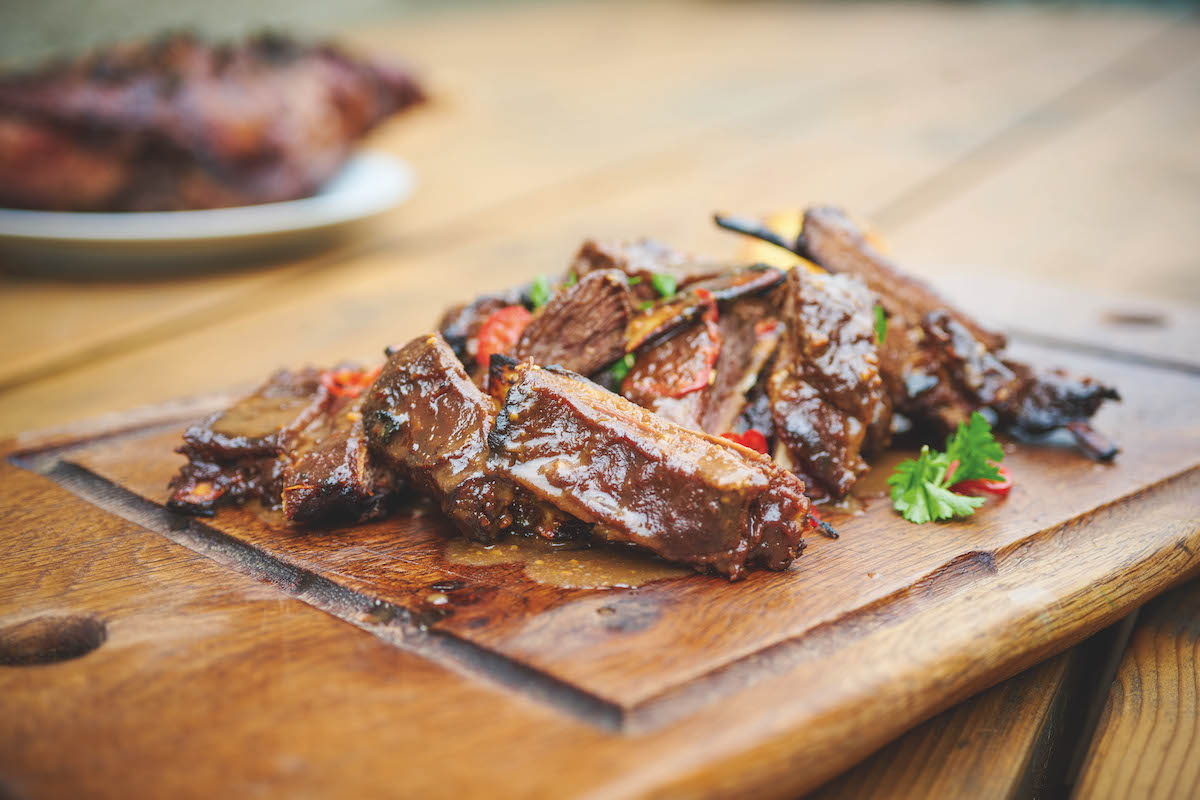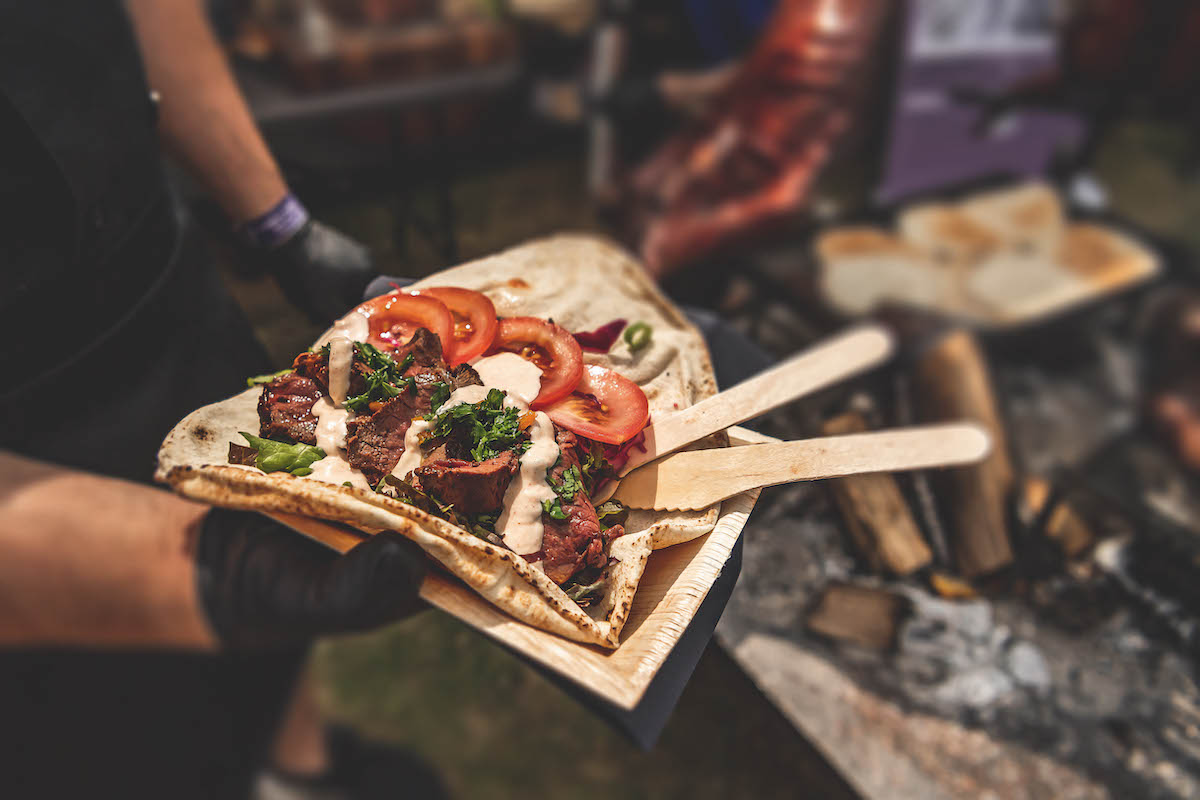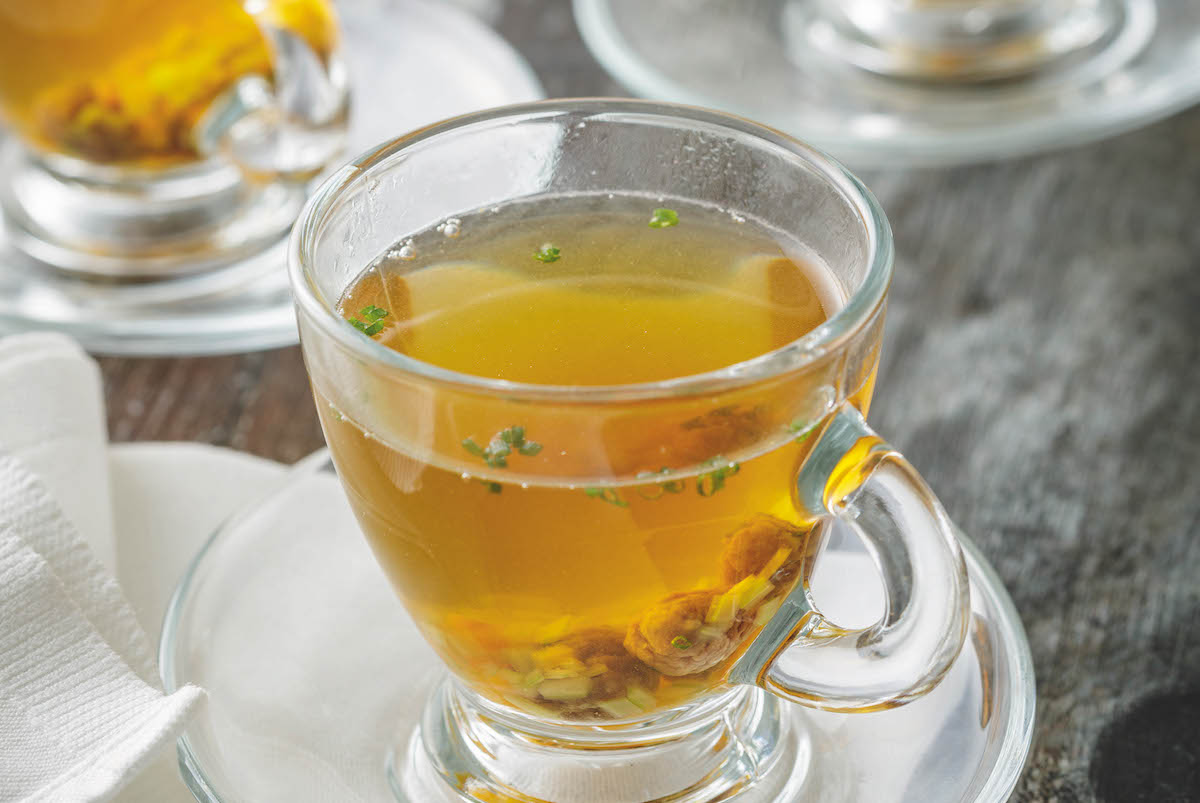Venison shanks recipe
Britain’s venison is arguably the best in the world, and cooking fallow shanks low and slow brings out all that rich flavour, says Cai ap Bryn. Serves two.

Venison shanks with rosemary, red wine and garlic jus.
Now that the start of the roebuck season is here, I wanted to take the opportunity to share possibly my favourite venison shanks recipe. It’s one that fits firmly in the category of comfort food. The weather has been pretty unpredictable lately, with almost summer conditions one day and snow flurries the next. While I love summer cooking and afternoons standing over the barbecue, when there’s a chill outside, these slow-cooked flanks are ideal.
Like lamb shanks, fallow venison shanks are rich, juicy and tender when you cook them right. All they need is some love and a bit of time and you have something very special. This is one of those dishes that impresses guests but isn’t all that tricky to make. Unfortunately, most game dealers and butchers tend to remove the meat from the shanks and place them on the trim pile or they dice them up. Shanks hold some large sinews and connective tissue that, with with a long, slow cook, become very tender. These tissues run through the meat, making it moist and flavoursome. Paired with a delicious red wine jus, you have just the thing for a special night in.
Braised Venison Shanks Recipe
Ingredients
- 2tbsp olive oil
- 2 venison shanks (fallow, red, sika or roe — muntjac and Chinese water deer are a little small)
- 1 white onion, peeled and halved
- 4 cloves garlic
- 1tsp salt
- 1tsp cracked black pepper
- 3 carrots
- 1tbsp tomato puree
- 300ml red wine
- 400ml stock (venison, beef or lamb)
- 3 sprigs rosemary
- 2 sprigs thyme
Method
- Drizzle some olive oil over the base of a casserole and put it on the hob over a medium to high heat.
- Place the shanks, onions and garlic into the casserole. Cook until the shanks become nice and brown all over. Sprinkle over ½tsp each of salt and pepper.
- Add the carrots and tomato puree. Fry for a minute. This will cook out the bitterness and add a deeper flavour. If it sticks to the bottom of the pan, add a little wine and keep moving the ingredients around.
- Add the wine and cook down for five minutes.
- Now pour in the stock and add the rosemary and thyme. Put the lid on. If you do not have a Dutch oven or a lid, all of the steps above can be completed in a frying pan or saucepan. It can then be transferred to a deep-sided casserole dish and covered with foil for the next step.
- Place in the oven at 150°C for about two-and-a-half hours. Halfway through the cooking time, check the dish and add more water if required. Also, take the opportunity to turn over the shanks.
- Once it is cooked, remove the shanks, wrap them in foil and set them aside.
- Place the pot back on the hob and cook to reduce slightly. If the gravy is still lacking consistency, add a little cornflour mixed with cold water to thicken it. If the stock is sufficiently cooked down, it should naturally thicken without the need to add cornflour. Add in the extra salt and pepper, if needed. I like to serve the shanks with buttered potatoes or creamy mash. It is a rich indulgent meal that will be a real treat.








